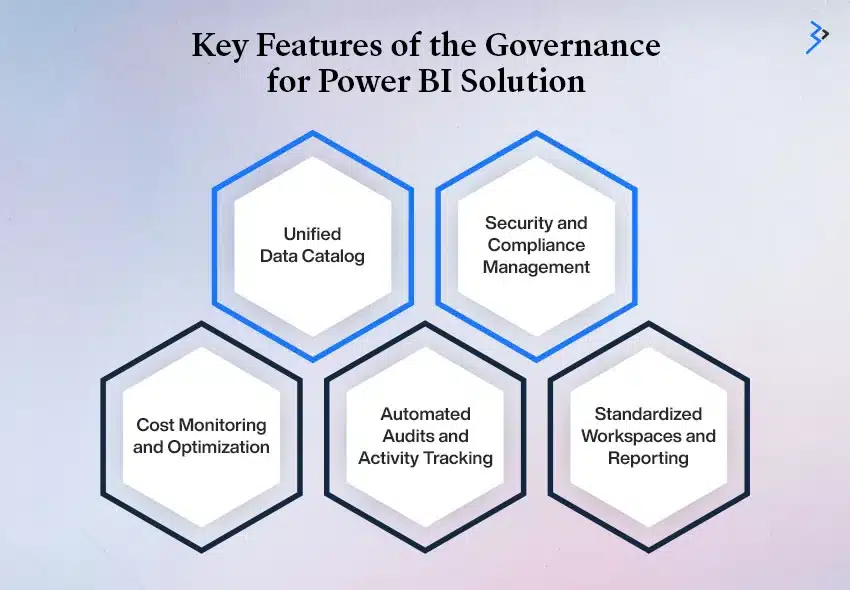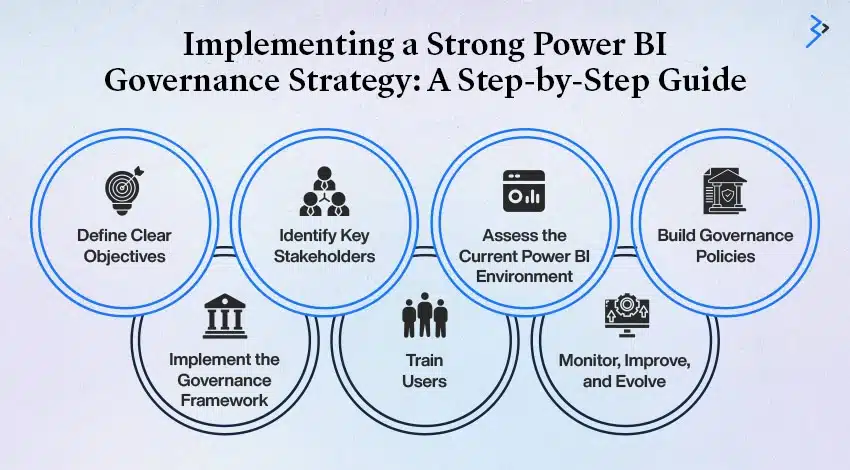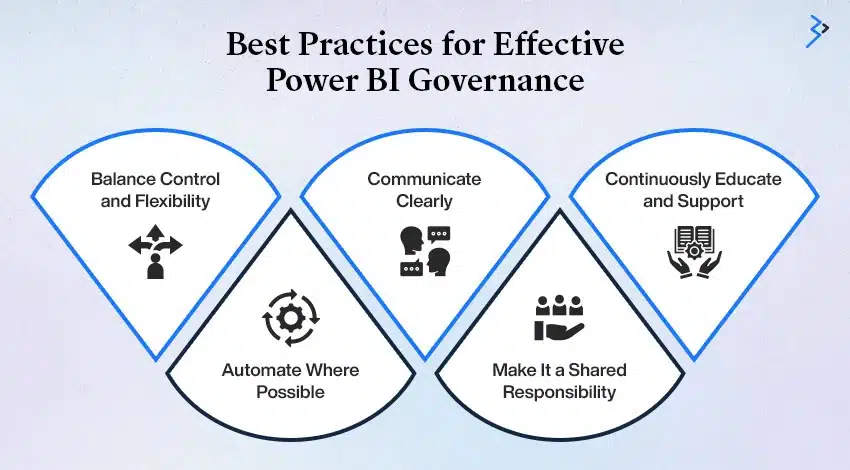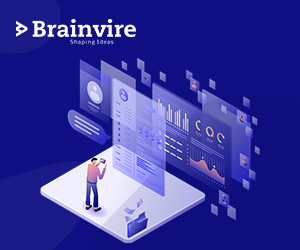In today’s hyperconnected, data-driven world, businesses rely heavily on analytics to stay competitive. Power BI, Microsoft’s powerful business intelligence tool, has quickly become a favorite among organizations looking to visualize, share, and act on data insights. However, as Power BI usage grows across departments, teams, and regions, the challenge of managing and governing that data ecosystem becomes more critical than ever.
Without a solid governance framework, companies risk inconsistent reporting, data duplication, security vulnerabilities, and spiraling costs.
Enter “Governance for Power BI” — a unified solution designed to strengthen governance practices, optimize operational efficiency, and control costs within the Power BI environment.
This blog dives deep into the importance of Power BI development services, key challenges organizations face, and how adopting a unified governance approach transforms your data culture.
Why Governance Matters in Power BI?

In Power BI, governance isn’t about putting up walls — it’s about building trust, enhancing security, improving usability, and unlocking the full potential of your data. Without proper governance, democratized data access can lead to major pitfalls such as:
- Conflicting reports that cause confusion
- Redundant datasets waste space and time
- Poor data quality erodes trust
- Compliance risks expose organizations to penalties
- Inefficient resource utilization is driving up costs
Governance acts as the foundation that keeps Power BI powerful, effective, and scalable. With the right framework in place, you ensure:

- Consistency: Everyone speaks the same “data language,” driving clarity and alignment.
- Security: Sensitive information stays protected from unauthorized access.
- Optimization: Storage, costs, and performance are constantly monitored and streamlined.
- Scalability: Teams can explore, innovate, and collaborate without chaos or bottlenecks.
When done right, governance doesn’t restrict creativity — it empowers it. It turns raw data into reliable insights, ensuring that your organization’s data remains an asset, not a liability.
In today’s fast-paced, data-driven world, governance in Power BI isn’t optional. It’s the key to sustainable success. When combined with Microsoft Power Apps Development Services, businesses can build scalable, governed solutions that drive smarter decisions and greater agility across teams.
The Common Challenges Without Proper Power BI Governance

Without a solid governance strategy, even the best Power BI environments can spiral into chaos. What starts as an effort to democratize data can quickly become a liability if left unchecked. Here’s what organizations often face without proper governance:
- Data Silos: Departments create their own reports, leading to fragmented and disconnected insights.
- Compliance Risks: Lack of clear controls makes it hard to meet regulations like GDPR and HIPAA.
- Poor User Adoption: Without trusted dashboards, users revert to outdated methods, reducing engagement.
- Uncontrolled Costs: Excessive workspaces, unnecessary storage, and idle premium capacities quietly drain resources.
- Security Breaches: Unrestricted sharing of sensitive datasets increases the risk of exposing confidential information.
- Inefficient Operations: Without standardization, teams duplicate efforts, slow down decision-making, and waste valuable time.
Over time, an unmanaged Power BI environment doesn’t just slow growth — it becomes cluttered, insecure, and ineffective.
Strong governance ensures that Power BI remains a dynamic, reliable tool, empowering teams while protecting the organization’s data assets.
In the world of self-service analytics, governance isn’t a barrier — it’s the secret to sustainable success, especially when integrated with Microsoft sharepoint development for seamless collaboration and content management.
Introducing Governance for Power BI: A Unified Solution
To tackle the growing challenges in Power BI environments, the Governance for Power BI solution was built — offering a structured, unified approach that protects innovation without limiting it.
This solution empowers organizations to manage their data effectively while maintaining the flexibility and creativity that Power BI is known for.
With Governance for Power BI, organizations can:
- Catalog and manage datasets for better data organization and discovery
- Standardize reporting practices to ensure consistency across teams
- Track user activity to boost accountability and transparency
- Monitor licensing and usage for cost-effective operations
- Implement role-based access control to protect sensitive information
- Improve data security by establishing clear safeguards
- Optimize resource consumption to avoid unnecessary expenses
By embedding governance across every stage of the data lifecycle — from ingestion and modeling to visualization and distribution — companies can fully unlock the power and value of their data assets.
Governance doesn’t just control; it enables smarter, faster, and more secure decision-making, keeping organizations agile and data-driven in today’s dynamic landscape.
Read More – A Step-by-Step Guide to Building a Power BI Interactive Dashboard
Key Features of the Governance for Power BI Solution

1. Unified Data Catalog
The solution provides a comprehensive catalog of all datasets, reports, dashboards, and workspaces. This promotes transparency across the organization, allowing teams to reuse existing assets rather than duplicating efforts.
2. Security and Compliance Management
You can define clear access permissions based on roles and responsibilities. Sensitive data can be identified, masked, or restricted, ensuring compliance with internal policies and external regulations.
3. Cost Monitoring and Optimization
The tool tracks Power BI service usage, highlighting underused licenses, inefficient resource allocations, and potential savings. Organizations can make smarter investment decisions based on real data.
4. Automated Audits and Activity Tracking
With Governance for Power BI, administrators gain real-time insights into who is accessing what, how frequently, and for what purpose. This makes it easier to detect anomalies, enforce accountability, and streamline internal audits.
5. Standardized Workspaces and Reporting
By establishing best practices for workspace design, dataset structuring, and dashboard creation, organizations ensure a consistent user experience across all teams.
Read More – Mastering Data Visualization with Power BI
How Governance for Power BI Enhances Operational Efficiency
Power BI governance isn’t about adding layers of control — it’s about unlocking operational excellence. A well-designed governance framework transforms Power BI from a reporting tool into a true engine for business agility and growth. Here’s how governance drives operational efficiency across the organization:
- Faster Decision-Making: Clean, reliable data minimizes validation time, allowing teams to act with speed and confidence.
- Higher Productivity: Reusable datasets and standardized templates free analysts from repetitive work, boosting output.
- Better Collaboration: Clear reporting standards and guidelines foster trust, transparency, and seamless teamwork across departments.
- Lower IT Burden: With self-service governance and automated monitoring, teams rely less on IT for daily support.
- Controlled Scalability: As Power BI adoption grows, governance ensures expansion happens securely and efficiently without chaos.
In this data-driven world, agility matters. Governance for Power BI doesn’t slow organizations down — it propels them forward by creating a foundation of trust, clarity, and efficiency. By investing in governance and aligning it with scalable solutions like Windows App Development Services, companies empower their teams to move faster, work smarter, and scale responsibly, turning data into a strategic advantage.
Implementing a Strong Power BI Governance Strategy: A Step-by-Step Guide

Adopting Governance for Power BI isn’t just a one-time project — it’s a strategic commitment to ensuring your data environment remains secure, efficient, and scalable. With the right approach, governance enhances creativity instead of stifling it. Here’s a simple, actionable roadmap to build a strong Power BI governance strategy:
Step 1: Define Clear Objectives
The first step is setting clear goals that align with your organization’s overall vision. Are you prioritizing data security, cost optimization, quality assurance, or a combination of all three? Establishing specific objectives will guide every decision you make throughout the governance journey.
Step 2: Identify Key Stakeholders
Governance is not an IT-only initiative. It’s crucial to bring together a cross-functional team, including business users, IT departments, security officers, and compliance leaders.
Each stakeholder offers valuable insights to ensure the governance framework meets the practical needs of every group it affects.
Step 3: Assess the Current Power BI Environment
Before making changes, take stock of your current situation. Evaluate usage patterns, identify existing risks, assess compliance gaps, and pinpoint areas where the environment lacks structure or security. This honest assessment provides a strong foundation for a tailored governance strategy.
Step 4: Build Governance Policies
Now, it’s time to set the rules that will guide your Power BI environment. Develop comprehensive policies covering:
- Data access and permissions to ensure sensitive data is protected.
- Report and dashboard standards to maintain quality and consistency.
- Dataset management for organized and efficient data usage.
- Licensing and cost monitoring to control expenses and optimize resource allocation.
- Security protocols that safeguard your environment against breaches.
Well-crafted policies create clarity and confidence for all Power BI users.
Step 5: Implement the Governance Framework
With policies in place, it’s time to put them into action. Deploy Governance for Power BI tools, set up a centralized data catalog, define user roles, configure permissions, and establish monitoring systems to oversee activities. Implementation is where your planning starts to come to life.
Step 6: Train Users
Even the best policies will fail without user buy-in. Organize training sessions to educate users on governance principles, policies, and the reasons behind them.
Empowered and informed users are more likely to embrace governance, follow best practices, and contribute to a culture of data responsibility.
Step 7: Monitor, Improve, and Evolve
Governance isn’t static — it’s a living framework that must adapt as your organization grows and changes. Continuously monitor activities, gather feedback, review policy effectiveness, and refine your strategies based on emerging needs and technologies. Regular improvements ensure your Power BI environment remains robust, relevant, and resilient over time.
A strong Power BI governance strategy isn’t about controlling users — it’s about empowering them with structure, security, and clarity. By following this step-by-step approach, you can unlock the true potential of your Power BI investment while minimizing risks and driving operational excellence.
Read More – Harnessing Data Insights: Power BI’s Impact on the Energy Industry
Best Practices for Effective Power BI Governance

To make your governance initiative truly successful, follow these best practices:
- Balance Control and Flexibility: Governance should empower users, not restrict innovation.
- Automate Where Possible: Use automated tools to monitor activity, manage licenses, and track compliance.
- Communicate Clearly: Explain why governance matters. Create easy-to-understand guides and policies.
- Make It a Shared Responsibility: Governance is not just IT’s job — it’s everyone’s responsibility.
- Continuously Educate and Support: Keep users informed about new governance updates, tips, and best practices.
Real-World Benefits of Stronger Power BI Governance
Organizations that adopt Governance for Power BI report transformative results:
- 40% Faster Report Development: Thanks to reusable datasets and templates.
- 30% Lower Power BI Licensing Costs: Through optimized resource management.
- 50% Higher User Satisfaction: With cleaner, more reliable insights.
- Enhanced Data Security: Fewer incidents and faster response to threats.
- Improved Compliance: Easier audits and stronger adherence to regulations.
Clearly, investing in governance delivers tangible business value.
Conclusion: Unlock the Full Potential of Power BI with Strong Governance
In an era where data-driven decisions define business success, Power BI offers immense possibilities.
But without a robust governance framework, those possibilities can quickly become pitfalls.
Governance for Power BI empowers organizations to:
- Foster trust in data
- Secure sensitive information
- Optimize costs
- Enhance user adoption
- Maximize the return on Power BI investments
By prioritizing governance today, you pave the way for a smarter, faster, and more secure tomorrow.
Ready to make your Power BI environment safer, smarter, and more strategic? Start your governance journey today and unleash the full potential of your data!
FAQs About Governance for Power BI
Absolutely! Good governance actually enables innovation by removing confusion and promoting trust in data.
No. Whether you have 10 users or 10,000, governance protects your investment and drives better outcomes.
The biggest risks are data inconsistencies, compliance violations, and mounting operational inefficiencies.
Yes. The solution adapts to different licensing structures, maximizing the benefits of both Premium and Pro environments.
It depends on the complexity of your current environment, but many organizations see significant improvements within 3–6 months.
Related Articles
-
The Microsoft Power Platform: Fueling Continuous Growth Across Industries
As organizations continue to grow and transform digitally, streamlining business processes has become a significant road to success. It gives users – within and around the IT industry – an
-
Power BI Consulting Services – MS Excel Power BI Data Types
The Progress of Excel There is no doubt that presently Excel has evolved to become the ultimate decision-making application. It allows to leverage the flexibility of the two-dimensional grid and
-
How to Develop Sustainable Power BI Solutions
Data is the lifeblood of modern companies, and we’re producing it more than ever before. But amassing tons of digital information is of no value unless organizations are able to




